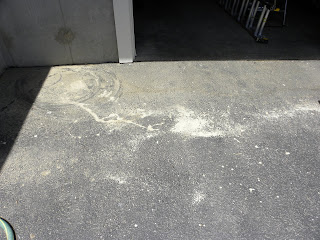Beautiful to look at, but use with caution
Aren't those plates just gorgeous? And how about these from kaboodle.com?
So pretty, so inexpensive, so potentially dangerous...
Melamine comes in such a variety of colors, patterns, shapes, and styles and is so inexpensive and break-proof that it has been heralded as the go-to-for-summer-cookouts-and-backyard-party-dishware. Oh, and it is used almost exclusively for baby dishes.
Melamine is a nearly-indestructible plastic that is chemically part cyanide compound, part formaldehyde, and parts carbon, nitrogen, and hydrogen to form a super-hard resin. All of that sounds horrible and dangerous but it mostly isn't...unless you heat it, that is.
Ah, heat! Heat is the nemesis of any coating, resin, or compound that has toxins to release, and melamine is no exception. Melamine dishes cannot be microwaved, safely put in the dishwasher on the 'heated dry' cycle, and cannot be used for acidic foods such as tomatoes, tomato sauces, lemons, or vinegar based salad dressings. I don't know about you, but tomatoes, lemons, and vinegar-based dressings pretty much makes up my list of ingredients for any salad I will make this summer. And that's the problem.
Did you know that melamine dishes weren't at all microwave safe and not completely dishwasher safe? I didn't until a few years ago when I was washing my oh-so-cute-for-using-on-the-deck plates and noticed that the plate was stamped Dishwasher Safe (which isn't entirely true) but not microwave safe. I googled 'melamine' just out of curiosity and am now sharing what I found out. It certainly doesn't advertise that fact on the packaging. What happens when melamine is heated is the resin begins to microscopically break down. Gases are released and these gases contain formaldehyde which is a poison, a known poison that causes cancer with long-term exposure and skin irritation and inflammation of the mucous membranes with short term exposure. I have warned against formaldehyde exposure before because it is in most paints, resins, glues, film, and is found in abundance in our polluted air. It is imperative that we limit our exposure to formaldehyde whenever we can. I prefer not to be embalmed before I am dead.
The safe way to use melamine dishware is to only put non-acidic foods on it and hand wash it in warm, not hot, water. If you're putting it in the dishwasher make sure the 'heated dry' cycle is not on and do be aware that using the dishwasher is shortening the safe lifespan of the dishes. Once you can see small lines running through the dishes the resin has been compromised and that dish is now leaking formaldehyde.
Luckily we can avoid melamine exposure completely by simply not using the dishes, right? Hmm, if only that were true. Melamine in its powder form is sometimes added to food to increase its protein. When I say food,
I specifically mean baby formula! I found this on Scientific American's website:
The FDA found tiny amounts of melamine in Mead Johnson's Infant Formula Powder, Enfamil LIPIL with Iron, according to the news service. FDA tests also turned up melamine in two nutritional supplements for kids, Nestle's Peptamen Junior and Nutren Junior-Fiber. Cyanuric acid, a byproduct of melamine, was found in another Nestle product, Good Start Supreme Infant Formula with Iron, the AP says. The FDA says that the toxicity of cyanuric acid is being studied, but it's thought to be as powerful as melamine, according to the news wire.
Oh, and it's an ingredient in the soy-based feed we import from China that is fed to chickens. And cows. And dogs. And cats. And goats and farm-raised-fish and farm-raised-shrimp too.
This is the problem. Poisons are so pervasive in our diet that when we can identify a source it is really crucial to limit exposure. Poisons are being deliberately fed to our children. So please, when you pull out those melamine dishes, check them for scratches, pitch them if they're compromised, don't cut on them, don't serve acidic foods on them, and hand wash them.
Or maybe just use glass?





















